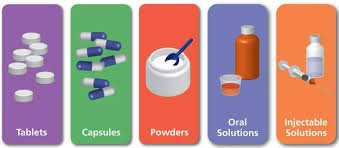The Shape of Pharmaceutical Dosage Forms

The Shape of Pharmaceutical Dosage Forms
The shape of pharmaceutical dosage forms plays a crucial role in patient compliance, product stability, manufacturability, and even therapeutic effectiveness.
1. Tablets
-
Shapes: Round, oval, capsule-shaped (caplets), triangular, square, or customized designs.
-
Purpose: Enhances swallowing ease (oval/caplets), allows branding and differentiation, prevents counterfeiting.
2. Capsules
-
Shapes: Cylindrical, elongated, or oval.
-
Purpose: Easy swallowing, controlled release, and better masking of unpleasant taste/odor.
3. Suppositories
-
Shapes: Bullet-shaped (rectal), cone-shaped (vaginal), pencil-shaped (urethral).
-
Purpose: Ensures easy insertion and retention.
4. Ointments/Creams/Gels
-
No rigid shape (semi-solid) but packed in tubes, jars, or pump dispensers that affect application convenience.
5. Transdermal Patches
-
Shapes: Square, rectangular, oval, or circular.
-
Purpose: Designed for better adhesion, dosing uniformity, and patient comfort.
6. Inhalers/Nasal Sprays
-
Device shapes optimized for portability, dosing accuracy, and patient-friendly handling.
7. Injectables (Ampoules, Vials, Prefilled Syringes, Cartridges)
-
Shapes dictated by volume, dosing precision, and compatibility with administration devices.
✅ Key Considerations in Dosage Form Shape Design
-
Patient compliance (easy swallowing, application, or insertion)
-
Safety (child-resistant, anti-counterfeit)
-
Branding/identification
-
Manufacturability and packaging efficiency
-
Regulatory acceptance
🎓 Discover one of the best Complete Pharmaceutical Production Course available —click below to explore the course that’s shaping future Production Course skills.

